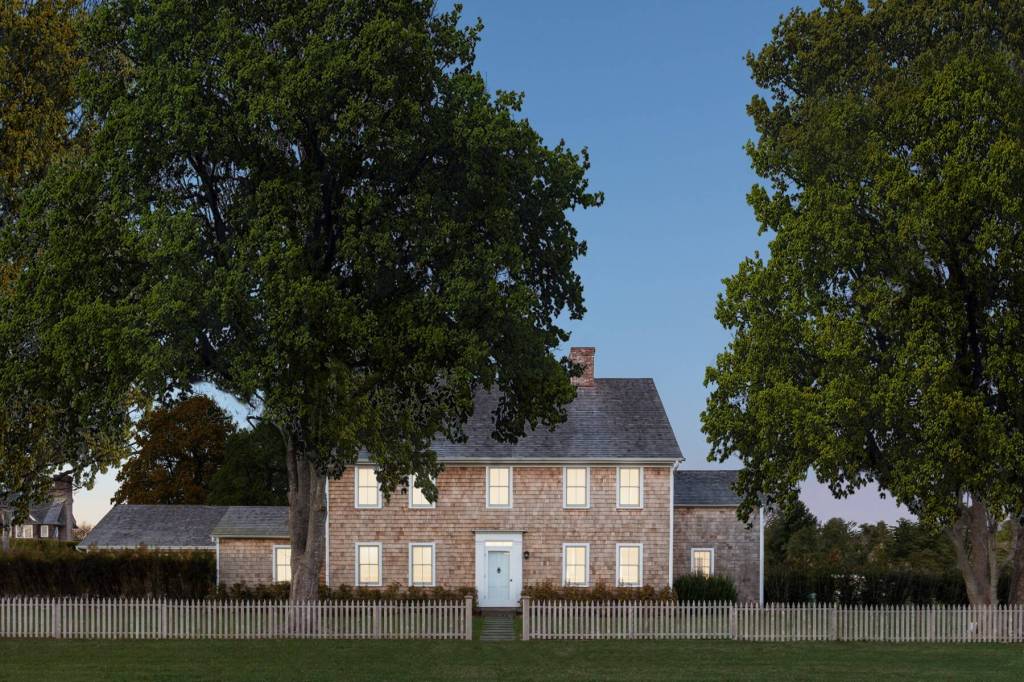Culinary Discoveries In Kenya
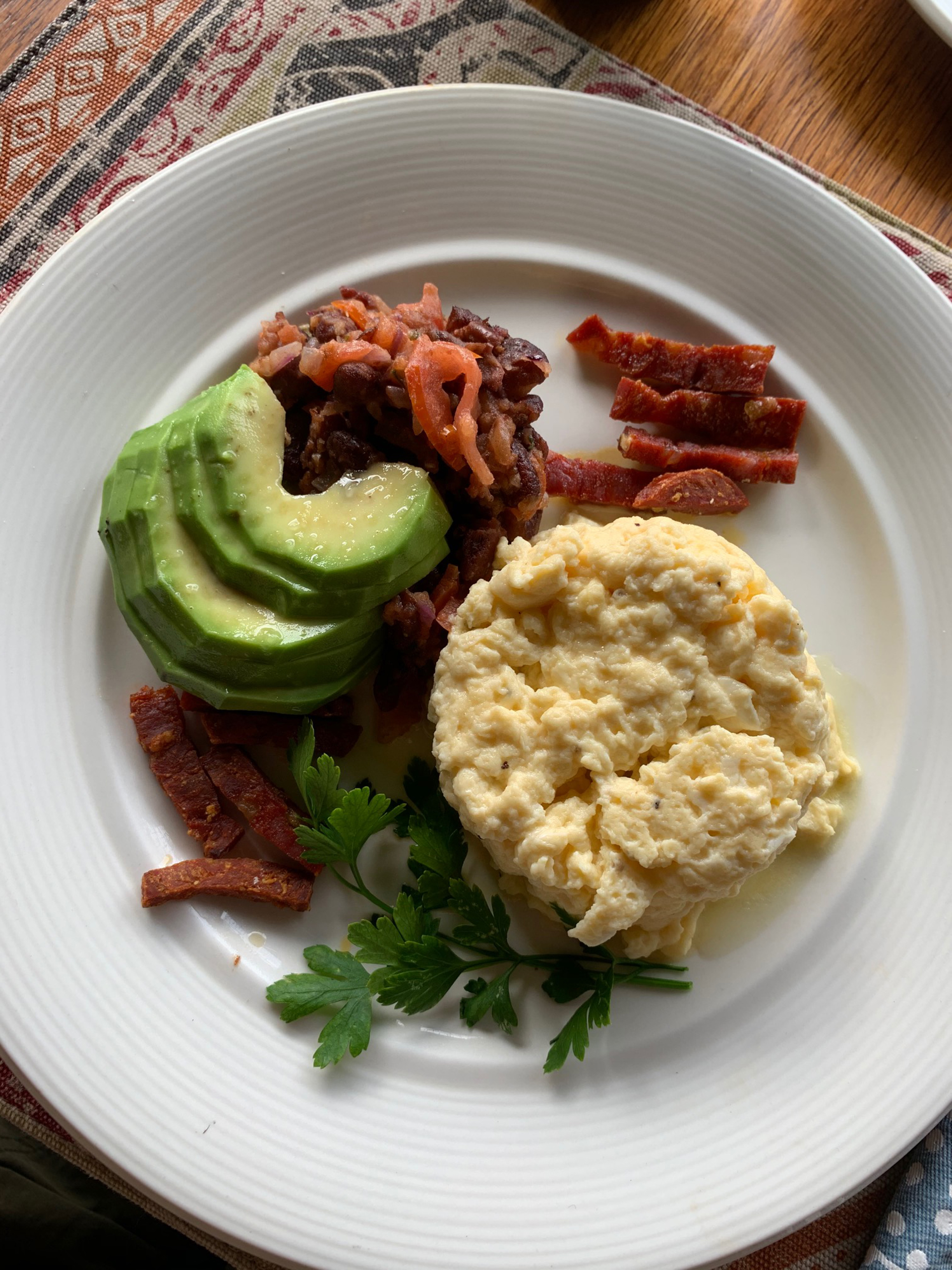

Visiting Kenya last month reminded me once again, you do not truly discover a destination until you connect with its food culture. My husband and I had been planning a trip to the highly sought-after safari destination that is the Masai Mara and to the north near Mount Kenya for almost two years.
I knew our private game drives would take up most of our day, up to eight hours per day on average. We predicted our experience would be “life-changing,” as many who had traveled to Kenya proudly exclaimed to us prior to our departure. Yet, second to witnessing the beauty and awe of the wild animals within their own habitats, it was the diversity of the food and plentiful amounts of it all throughout Kenya that was so astounding.
“The fruit in Kenya is dripping off of the trees,” explained our game driver in northern Kenya. “People are well fed here.”
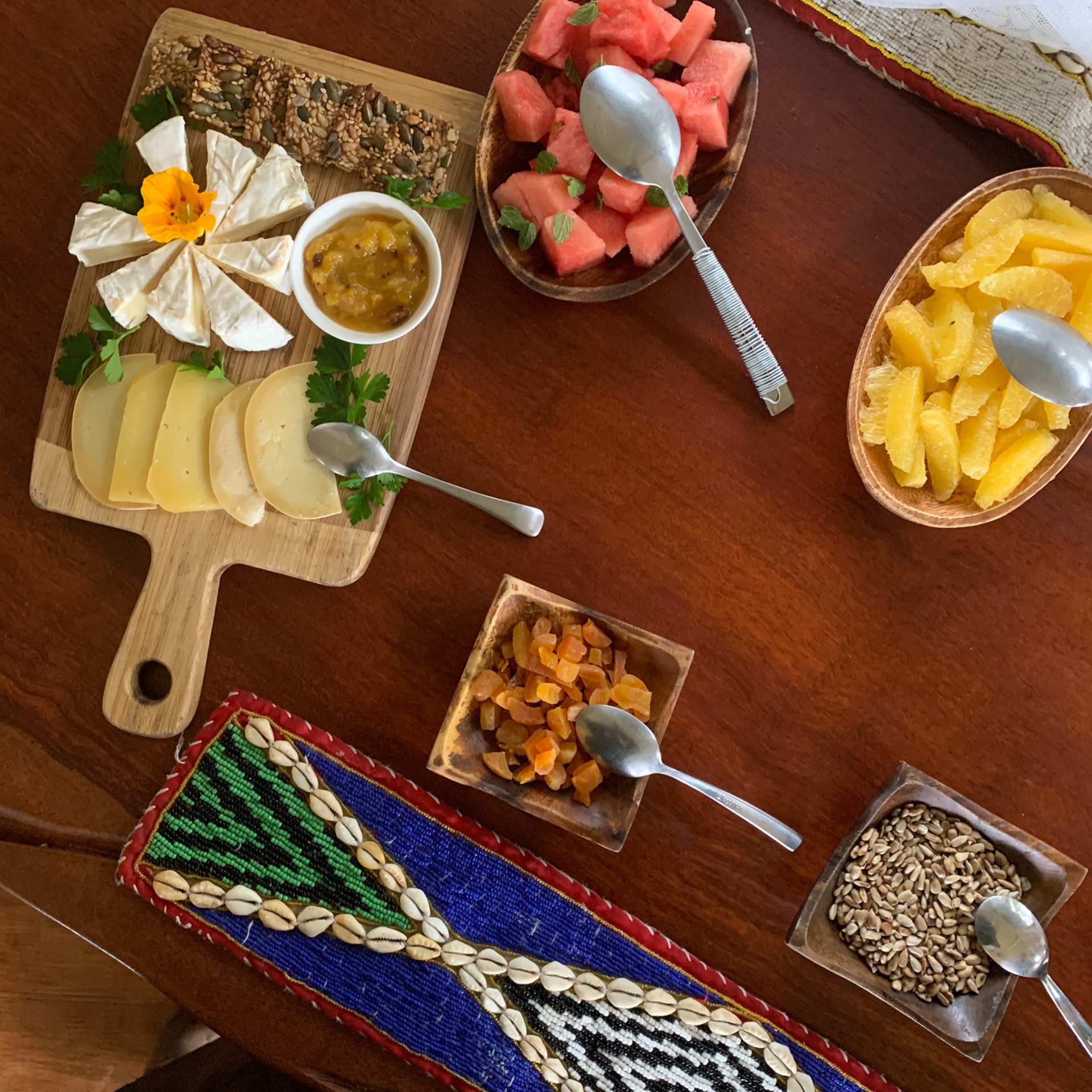
Game Drive Meals
My husband and I stayed at the following properties: Solio Lodge and Sala’s Camp. A typical game drive for us began at 8 AM at Solio, and Sala’s game drives in the Masai Mara began at 6:30 AM. Our game drives at Solio started a couple of hours later because we were staying at a lodge within an enclosed wildlife sanctuary. Breakfasts out on the drive are known as “Bush Breakfasts.” These meals would be quite extensive and include yogurt, granola, eggs or pancakes, an abundance of fresh fruit, toast, coffee, and tea. Mincemeat may be served with eggs or a light omelet may be prepared.
During the evenings, we would have sundowners. These short game drives typically lasted for 90 minutes and included some libations like wine or beer, and hors d’oeuvres. These lite bites may be miniature quiches, meat pies, cheeses and salted nuts, or croquettes.
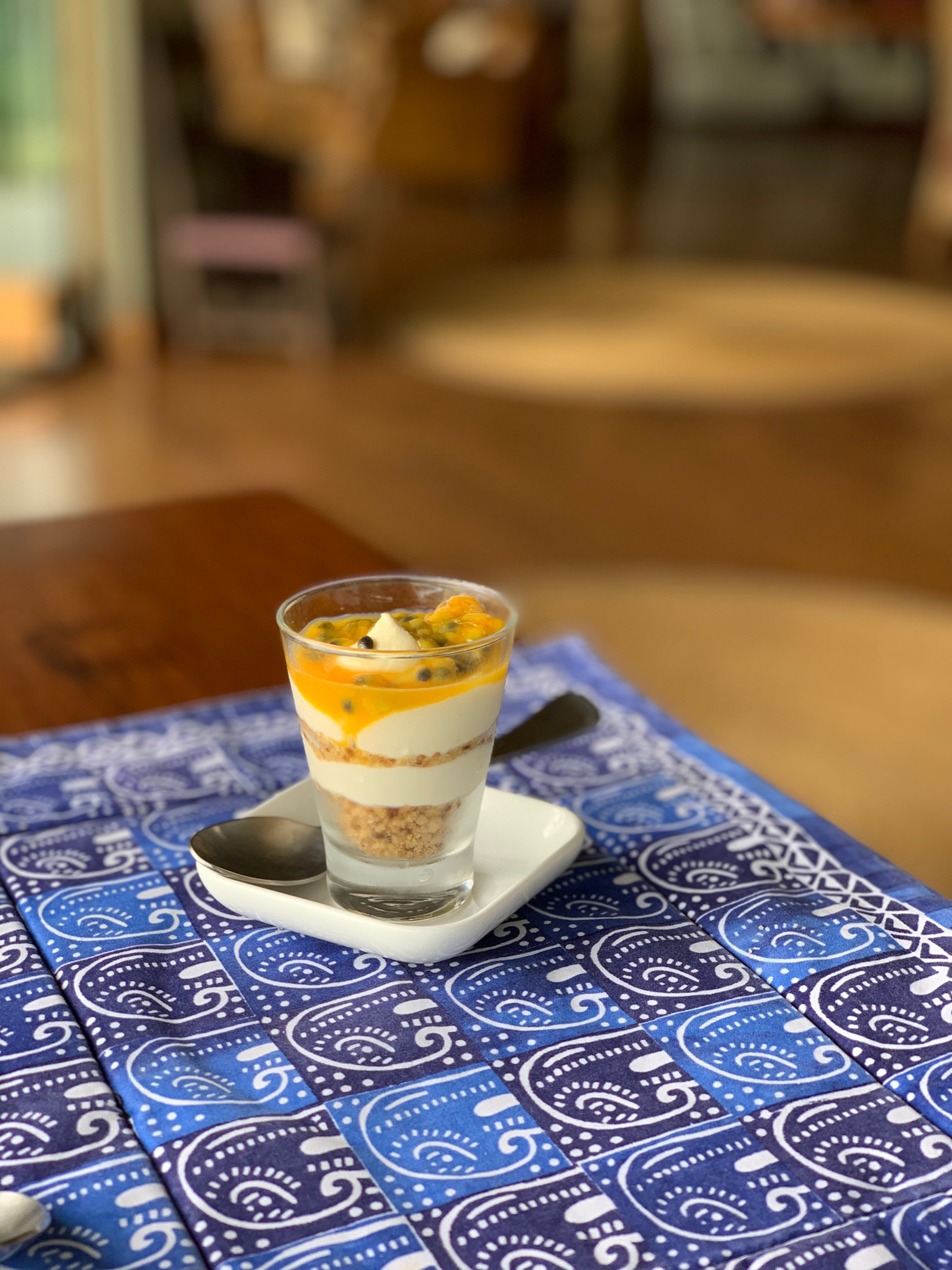
Lodge & Camp Meals
Cuisine while on safari entwined a mix of Indian, African, American, and British influences. For breakfast, there was a full spread of options to start, such as fresh and dried fruits, date bread, and nuts and seeds for topping yogurt. Breakfast main courses were a choice of zucchini and sweet potato hash brown with chorizo sausage, avocado, and eggs, Brioche French toast, or avocado on toast with feta.
For lunch, an example spread would start with white bean and roasted garlic dip with marinated mushrooms and ciabatta bread. Next, we munched on thinly sliced beef fillet with crispy polenta fries, and sweet corn and roasted pepper salsa. A side Caesar salad with anchovies was served. Additional lunch selections may include a shrimp and avocado salad, and rice and vegetable-based side dishes. For dessert, fruit-based options were most popular like a fresh fruit plate with berry coulis, or mango compote with coconut granola and vanilla custard. Kenyan coffee and tea always accompanied.
There were select afternoons where afternoon tea would be served back at camp. This option would rotate with the evening sundowners. Some sundowners were private, except one evening where everyone staying at the camp met for evening cocktails and lite bites.
Dinner was served between 7 and 8 PM. We would start with drinks and hors d’oeuvres, such as my particular favorite: coconut crumbled Camembert cheese with pineapple chutney and pickled cucumber. A main course was beef ballotine with potato gratin and sugar peas. To cap off the night, we dipped Tiramisu Churro’s with hot fudge sauce served with coffee ice cream.
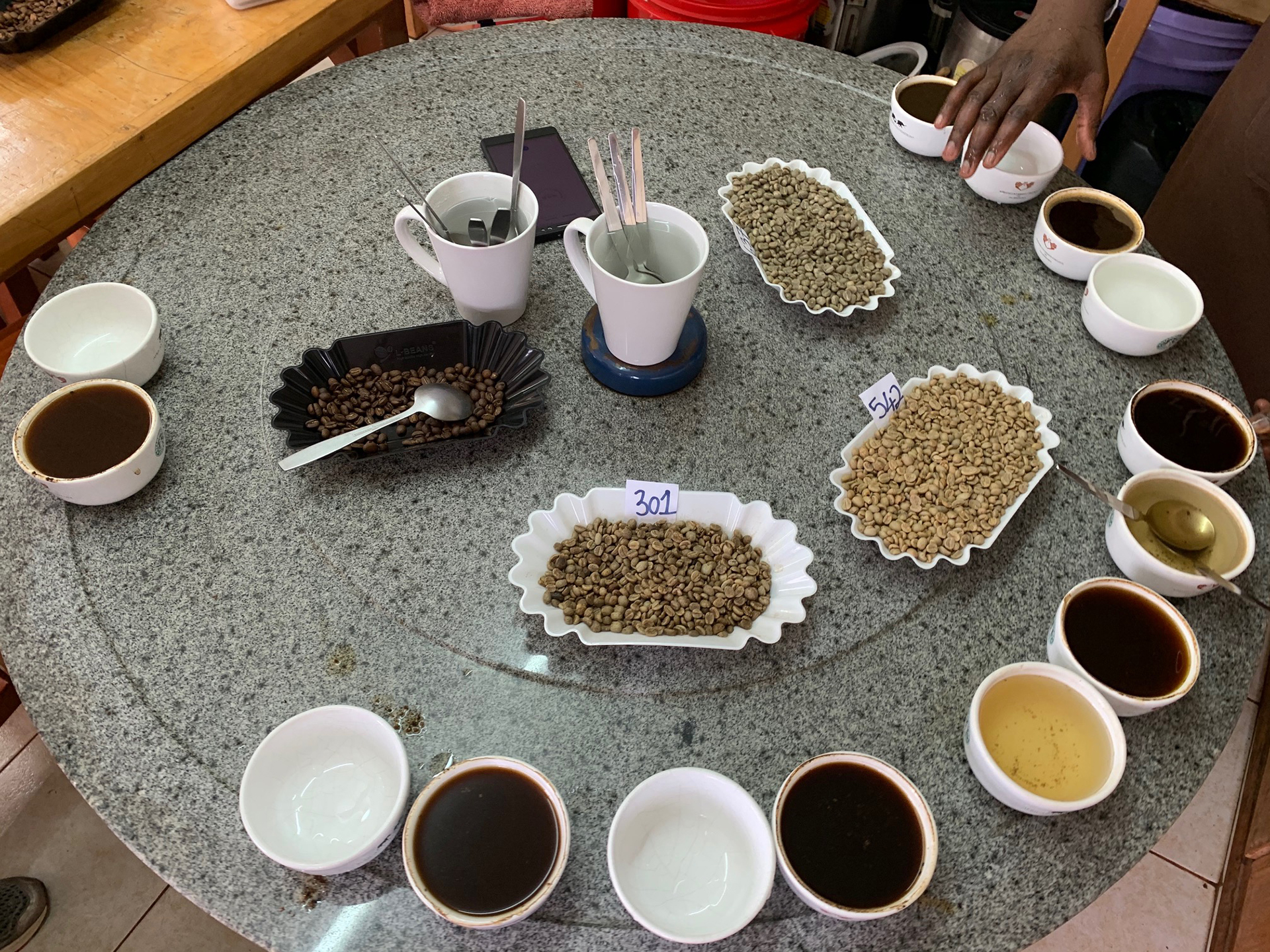
Coffee Farm
During our trip, we visited a nearby university, Dedan Kimathi University of Technology, where we explored the Coffee Technology Center and learned about its cultivation and production methods. We then participated in a coffee tasting class where we witnessed how Kenyan coffee beans are graded. For example, the range of beans between the E and AB grade are considered the most vibrant in flavor. The lower the grade, the lesser the quality. Kenyans prefer not to drink coffee or their “cash crop.” The higher-grade beans are then shipped to the United Kingdom for distribution around the world.
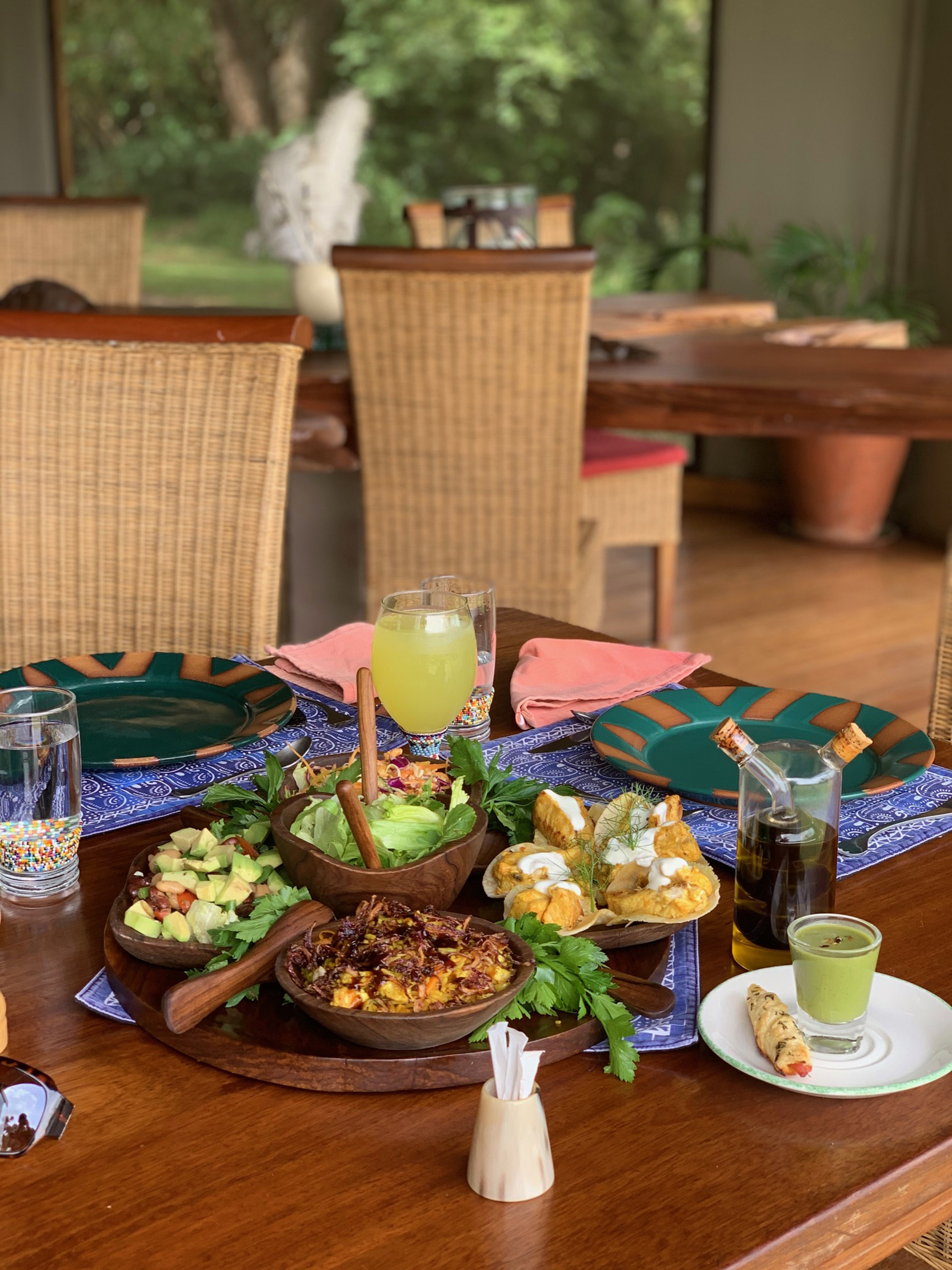
Local Roots
Kenyans exemplify living off the land. The meat is local and plentiful, and the diverse range of fish is caught off the Kenyan coastline near Mombasa and or Malindi. For fish, you can expect species like Mahi Mahi, Tilapia, Barracuda, Yellowfin, and Marlin, just to name a few. For meat, typical meals may include chicken, pork, beef, goat, or even crocodile. You will notice right away that the meat is gamier than what you may find in the U.S.
Kenyans are not wasteful in any way and are very focused on sustainability practices when it comes to farming and production. The Maasai are a great example of this practice. Their cuisine is influenced by their livestock and what is directly accessible to them.
Nairobi Restaurants
Kenya is famous for being a highly sought-after luxury safari destination. However, the dynamic city of Nairobi has some notable options when it comes to dining out. One of the most famous is Carnivore, located close to Wilson Airport. A variety of meats are served and carved at your table including camel, ostrich, and crocodile. The experience at Carnivore is all-you-can-eat, and includes a soup course, and the meat is served with home baked brown bread. Dessert and coffee follow the meat tasting experience. A vegetarian menu is also available. Other restaurants to consider include Talisman, The Lord Erroll, and About Thyme Restaurant.
